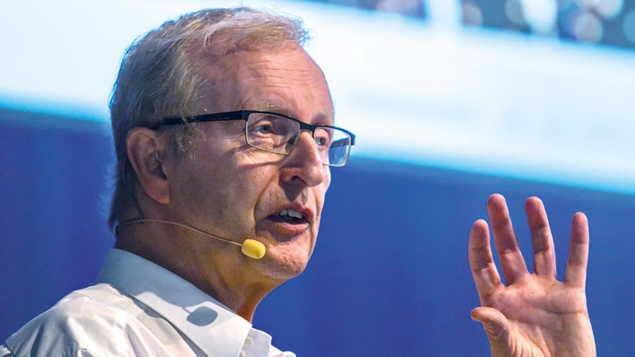
Willem (“Wim”) de Boer passed away on 13 October, aged 72. Wim studied physics at the University of Delft and graduated in 1974 with a thesis on the dynamic orientation of nuclei at low temperatures, which laid the foundation of polarised targets in high-energy physics. Following a CERN fellowship, he joined the University of Michigan, Ann Arbor and worked on polarised proton–proton scattering at the ANL synchrotron, where he found an unexplained difference in the cross sections for parallel and antiparallel spins.
In 1975 Wim took up a position at the Max Planck Institute for Physics in Munich where he stayed, interrupted by a sabbatical at SLAC in 1987, for 14 years. In Munich he joined the team working on the CELLO experiment at DESY, where he took responsibility for the data-acquisition system. The CELLO years were instrumental for precision studies of QCD, out of which the triple-gluon coupling and the running of the strong coupling constant emerged – a subject Wim pursued ever after.
Following his appointment to a professorship at the University of Karlsruhe in 1989, Wim created research groups at LEP’s DELPHI experiment, the AMS-02 experiment on the International Space Station, and he coordinated a group at the LHC’s CMS experiment. Having studied the running of the coupling constants of the weak, electromagnetic and strong interactions, Wim found, together with Ugo Amaldi and Hermann Fürstenau, that these could only meet in a unified way at high energies if phenomena beyond the Standard Model, such as supersymmetry, existed. This was published in their seminal 1991 paper “Comparison of grand unified theories with electroweak and strong coupling constants measured at LEP”, which led to the expectation that a new energy domain would open up at the TeV scale with the lightest supersymmetric particle constituting dark matter. The paper has been cited almost 2000 times.
Wim contributed a multitude of ideas, studies and publications to each of the experiments he worked on, driven by the single question: where is supersymmetry? He looked for dark-matter signals at the lowest energies in our galaxy using earth-bound observatories, balloon experiments and satellites, at signals from direct production at LEP and the LHC, and in anomalous decay modes of bottom mesons using data from the Belle and BaBar experiments, among others.
It is our belief that Wim was most fascinated by AMS-02. Not only did he and his group contribute an electronic readout system to the detector, he also saw it take off from Cape Canaveral with the penultimate Space Shuttle flight in 2011, celebrated by the visit of the whole crew of astronauts to Karlsruhe later that year.
Wim’s career saw him work across detectors using gases, liquids, silicon and diamonds, and study their performance in magnetic fields and high-radiation backgrounds. He also investigated the use of detectors for medical and technical applications. His last R&D effort began only a few weeks before his death: the development of a novel cooling system for high-density batteries.
Our field has lost a great all-round physicist with unparalleled creativity and diligence, a warm collegiality and a very characteristic dry humour. Well aware of his rapid illness, his last words to his family were: “Hij gaat nog niet, want hij heeft nog zoveel ideeën!” (roughly “He’s not going yet, because he still has so many ideas!). He will be missed deeply.








